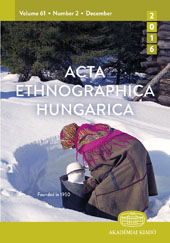The Tin Content of the Blue-Glazed Hutterite and Haban Ceramics – Implications for the Production Technology Based on Results of the Handheld XRF and Electron Microprobe Analyses
The Tin Content of the Blue-Glazed Hutterite and Haban Ceramics – Implications for the Production Technology Based on Results of the Handheld XRF and Electron Microprobe Analyses
Author(s): Bernadett Bajnóczi, Zoltán May, Anaa Ridovics, Máté Szabó, Géza Nagy, Mária TóthSubject(s): Archaeology, Visual Arts, Ethnohistory, Methodology and research technology
Published by: Akadémiai Kiadó
Keywords: ceramic; faience; blue glaze; tin glaze; engobe; Hutterite; Haban; “mining town” workshop;
Summary/Abstract: The Hutterites and Habans produced coloured-glazed, mostly blue- and yellow-coloured vessels alongside their white-glazed faience ware. However, the production technology of the coloured-glazed vessels, specifically the nature of the glaze, is a matter of debate among scholars. Both coloured tin glaze and coloured engobe covered with a transparent lead glaze were thought to have been applied on the ceramics. Around 140 objects of blue-glazed Hutterite and Haban museum objects and archaeological artefacts were analysed using a handheld XRF spectrometer. In addition, small fragments of selected ceramics were studied by electron microprobe analysis (EMPA). According to the XRF measurements the blue glaze of all except one of the studied Hutterite and Haban ceramics contains tin in variable amounts (from about 0.015 wt% up to 13 wt%). The EMPA technique showed that tin in the form of tin oxide opacifier was deliberately added to the single-layered alkali–lead or lead–alkali glaze. These data confirm that the tin glaze technique was used during production of blue-glazed ceramics, and in this respect they can be regarded as faience. The blue glaze of the Haban vessels produced by a “mining town” workshop contains tin in very low concentrations (Sn <0.2 wt% by XRF), therefore the opacity of the glaze is mainly caused by the abundant silica and arsenate particles.
Journal: Acta Ethnographica Hungarica
- Issue Year: 60/2015
- Issue No: 2
- Page Range: 517-534
- Page Count: 18
- Language: English
- Content File-PDF

